1970s: The “Proust” chair

History
Poltrona di Proust, or the “Proust” Chair was designed in 1978 by an Italian designer, journalist, and teacher Alessandro Mendini. He believed that art, architecture, philosophy and literature influence each other. The project began a couple of years earlier, when Mendini was designing a textile pattern for Cassina inspired by French writer Marcel Proust. It was then that he came across a chair in the neo-baroque style of 18th century France that gave its shape to the “Proust” chair.
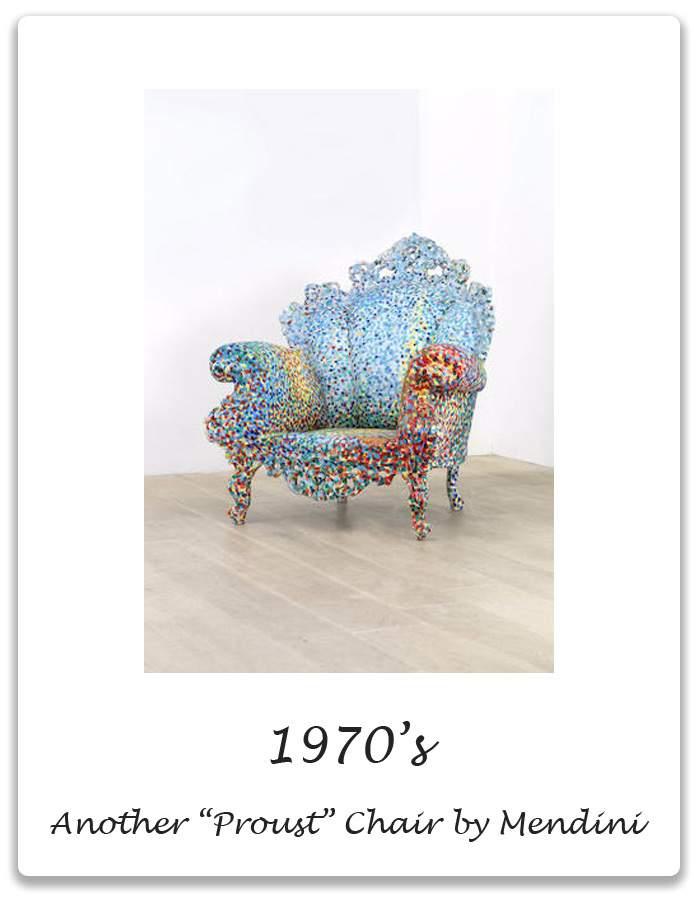
Designed by
Alessandro Mendini (born 16 August 1931 in Milan, Italy)
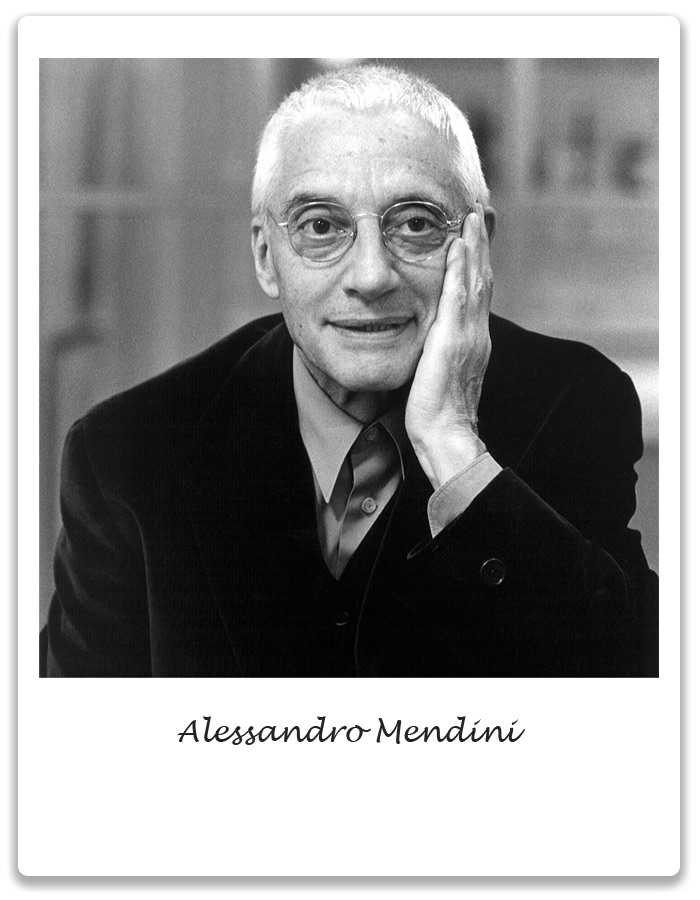
Dimensions
Size: 107 x 105 x 94 cm; seat height 35 cm.
Materials
Painted wood and painted upholstery.
Elements and Principles
Colour and Pattern. Marcel Proust was strongly influenced by French impressionism, and this is the essence of the design of the “Proust” chair by Mendini. Spots of contrasting colours are arranged in overall pattern that, like impressionist paintings, create a visual effect that is best appreciated from some distance.
Manufactured by
Studio Alchimia, Milan
Used by Designers
The “Proust” chair becomes the absolute centerpiece of any interior where it may be used. Therefore it requires a highly skilled designer to build it into any space. It may be used in residential interiors, particularly in modern calm and white or monotone rooms, thus giving each such space the central focal point. It may also be used in commercial interiors, particularly of luxury and contemporary ambiance, such as hotels, art galleries, libraries or clubs.
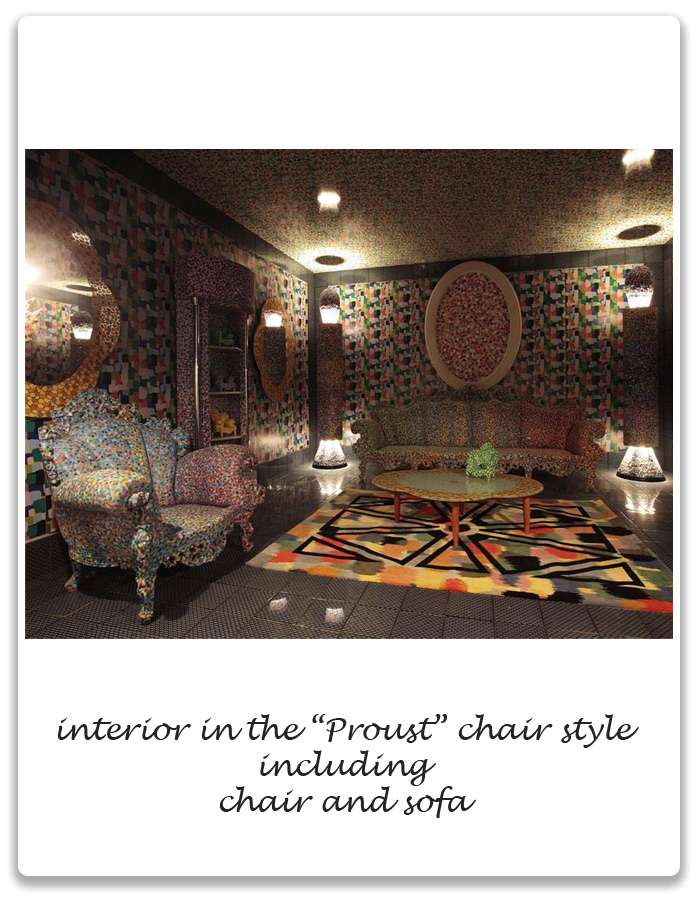
Replicas, contemporary interpretations and influences
There are a few replicas of the “Proust” chair. Mendini created a few of them but they were not manufactured on a commercial scale then. Later on they have been increasing in popularity and this caused more replicas and variations of the chair to be designed and manufactured worldwide. It can be purchased from, among others, Inexistencia,
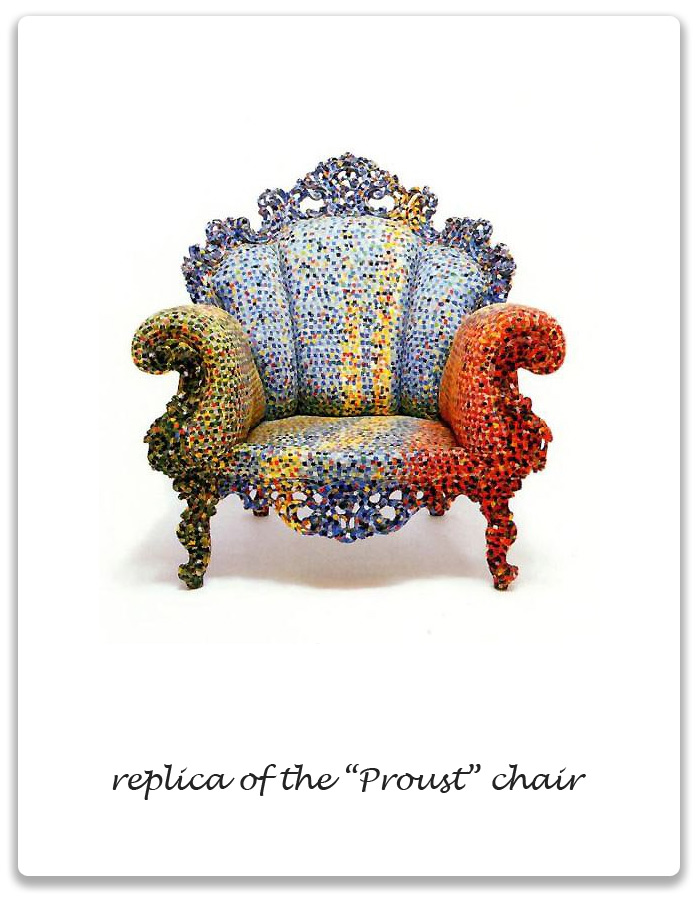
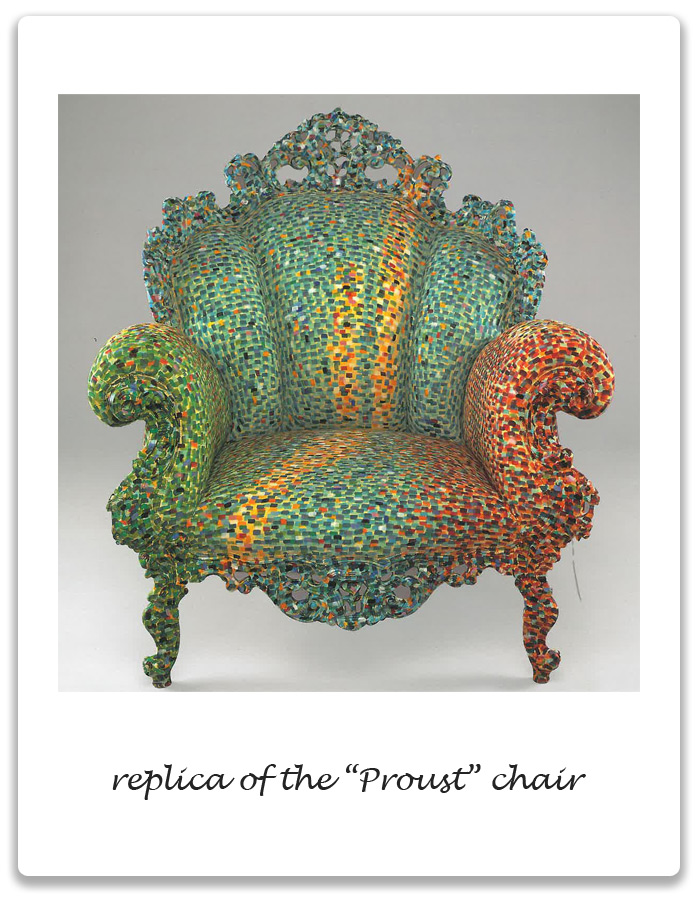
There is an increasing number of contemporary takes on the “Proust” chair, mainly in the colours and patters of the fabric and wood. The shape of the chair remains largely constant.
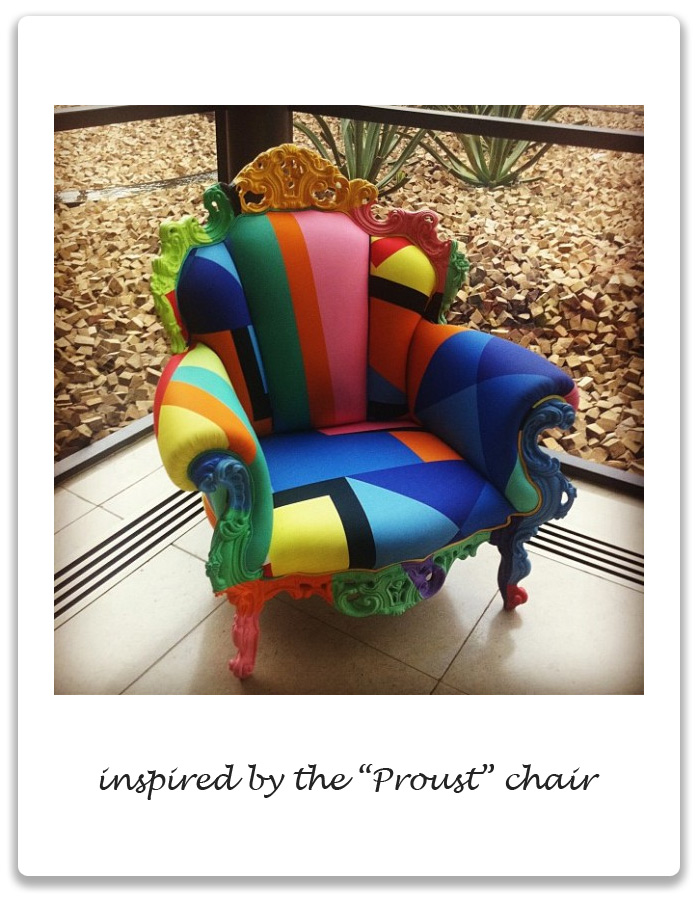
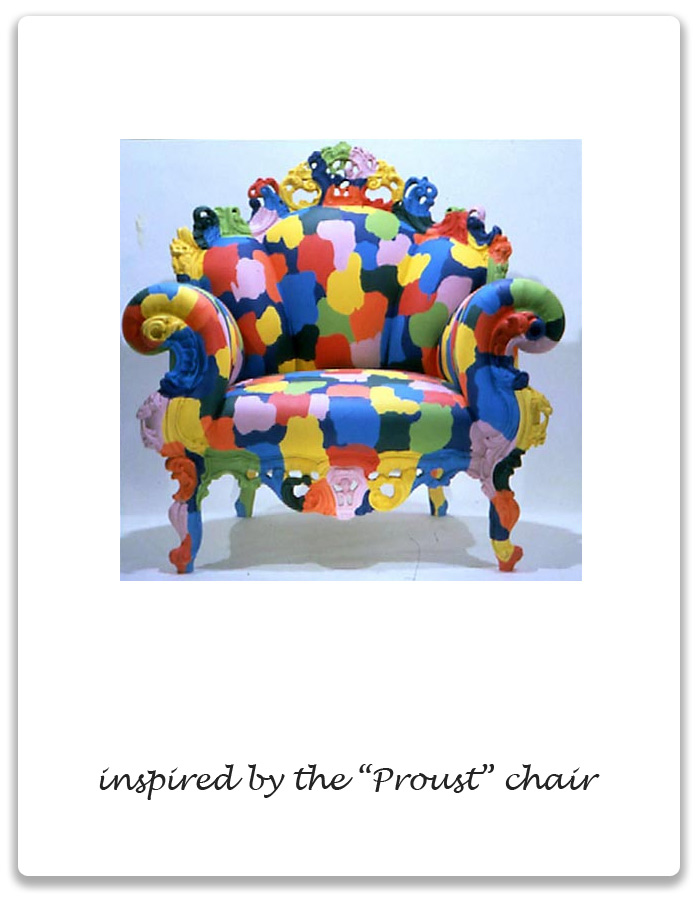
Magis has produced the “Proust” chair as an industrial object molded in rotational polyethylenewhich can now be used both indoors and outdoors. Magis has also introduced monochrome versions of the chair.
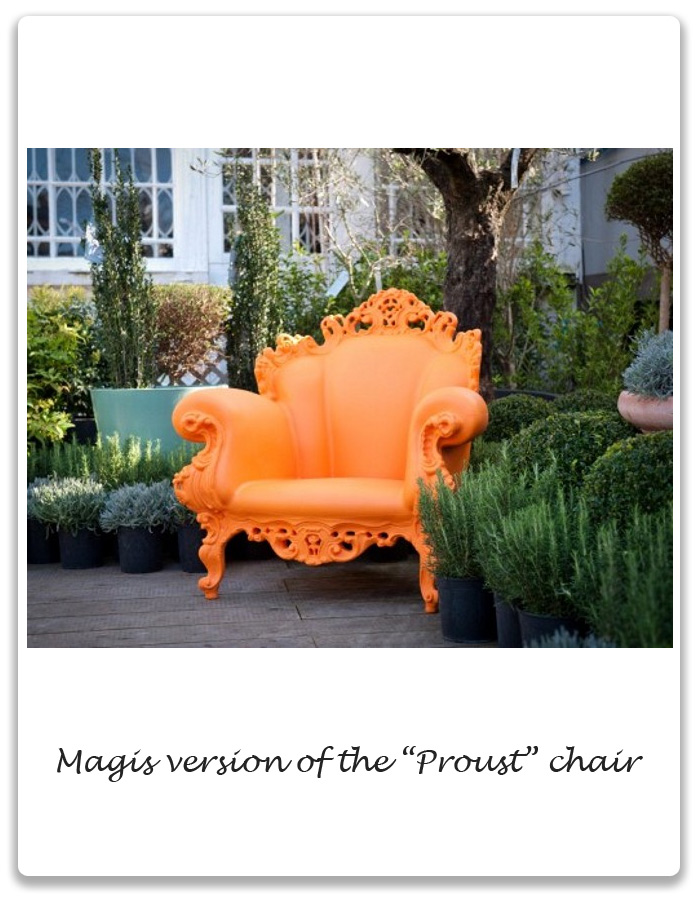
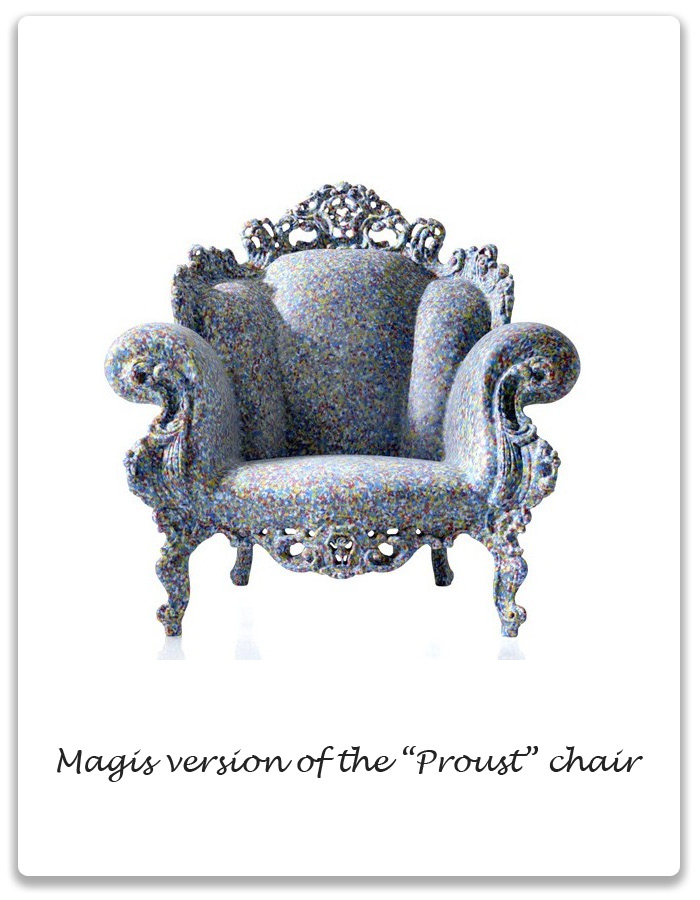
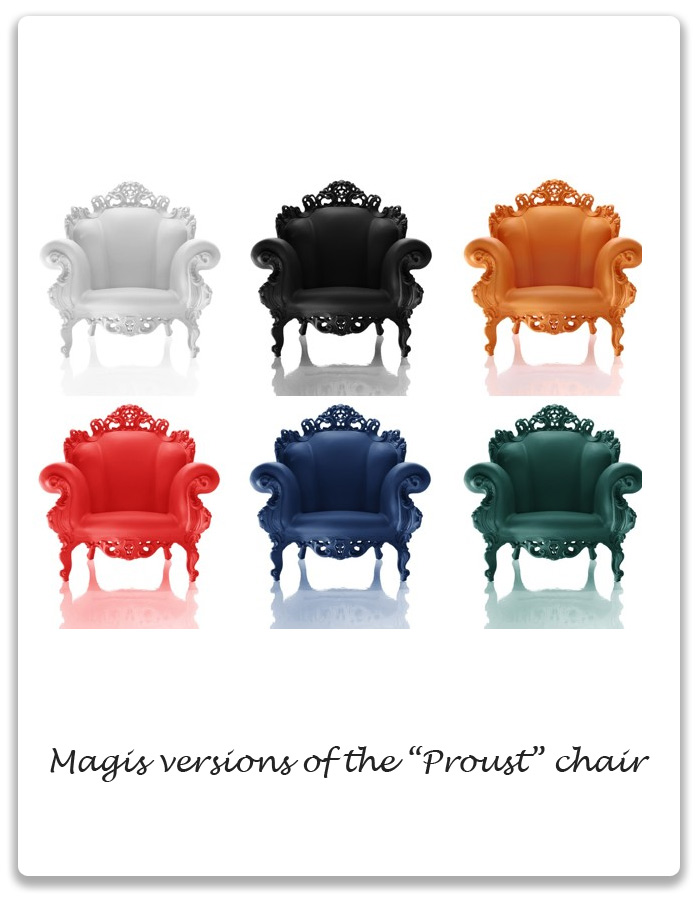
Resources
http://www.design-museum.de/en/collection/100-masterpieces/detailseiten/poltrona-di-proust-alessandro-mendini.html
http://www.ateliermendini.it/index.php?mact=News,cntnt01,detail,0&cntnt01articleid=147&cntnt01detailtemplate=AnniDett&cntnt01lang=en_US&cntnt01returnid=169
http://loja.inexistencia.com/EN/magis-proust-armchair-p-CS1276MG.aspx
http://www.fashionismo.com.br/2013/03/cadeira-magis-proust/
https://www.tumblr.com/search/proust%20chair
http://www.designophy.com/designpedia/design-designer-1000000016-alessandro-mendini.htm
http://ddelautour.com/2012/04/23/alessandro-mendini/
http://www.allartnews.com/one-of-the-most-iconic-post-modernist-designs-prousts-armchair-to-sell-at-bonhams/
http://aasid.parsons.edu/decorationascomposition/content/alessandro-mendini-proust-armchair
https://www.bonhams.com/auctions/20166/lot/102/




